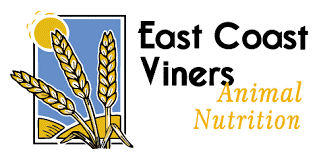Interpret your feed label to maximise nutrition this spring
Understanding the detail on feed labels is key to getting nutrition and productivity right, says Steven Eddie of livestock nutrition experts, East Coast Viners Animal Nutrition.
Reading feed labels is often overlooked but being able to interpret the nutrient content and ingredient balance in the feed you are buying can make a significant difference to output and margins, he explains:
“The ingredients and their proportions, impacts how the rumen digests and absorbs the nutrients, and consequent livestock productivity and ongoing health. It may seem obvious but when you are looking at feed labels, you’re not always comparing apples with apples: not all 18% ewe rolls, for example, are made equal. They could have different quality proteins or mineral balance. You can overfeed if you get the protein levels wrong as the animals can only metabolise so much, which results in wasted energy and expense. So when selecting feed products, it’s important to be able to understand the composition to know whether it’s right for your stock at that stage and not to judge on price and protein content alone.”
All manufactured feeds have a label that lists the ingredients as well as the analysis of what nutrients are in the feed. Ingredients, which include raw materials, vitamins, minerals and additives – are, as they are on food products on supermarket shelves – listed in descending order: ingredients at the top of the list make up the highest % of the ration.
“Ensure that high quality protein and energy sources are in the top five ingredients: barley, wheat, sugar beet, distillers’ maize or hi pro soya bean meal,” advises Steven. “Not all crude proteins are the same. Soya for example is a more meaningful protein for colostrum quality, than rapeseed meal. Sunflower and rapeseed meal are often included for protein content, and have their place, but it’s important that the levels of these are in the right proportions to retain palatability and how effectively the nutrients are absorbed. Avoid high levels of fibre and ash, and cheaper fillers such as oat feed, soya hulls and palm kernel should be low on the ingredients list. These can sometimes make up to 40% of the ingredients.”
ECVG’s nutritionists take a lot of time and care to ensure the right balance and quality of minerals and vitamins for different needs, and this can make a significant difference to overall growth and productivity. Regional and farm factors are taken into account, such as breeds and weather, which may require more than the standard Recommended Daily Amount (RDA).
Always check the obvious, he advises:
“As well as checking the name of the product, check the instructions for use to ensure you are using the right product for the right stock and stage. This can help balance your budget as well, as there are times when you need targeted feeds for specific outcomes and others when a less expensive general purpose feed will do the job. Also make sure it’s still in date, as old feed can cause issues.”
We are finding that farmers used to take feed labels for granted, adds Steven, but they are increasingly aware that it’s important to read them fully.
“It can be tempting to buy what seems to be better priced feed, but the initial price difference for a better quality composition is undoubtedly paid back with having healthy, productive livestock. It means farmers see a consistent weight gain and spend less time on interventions and managing the stock if they are doing well. It’s focusing on the bigger picture and return.”

